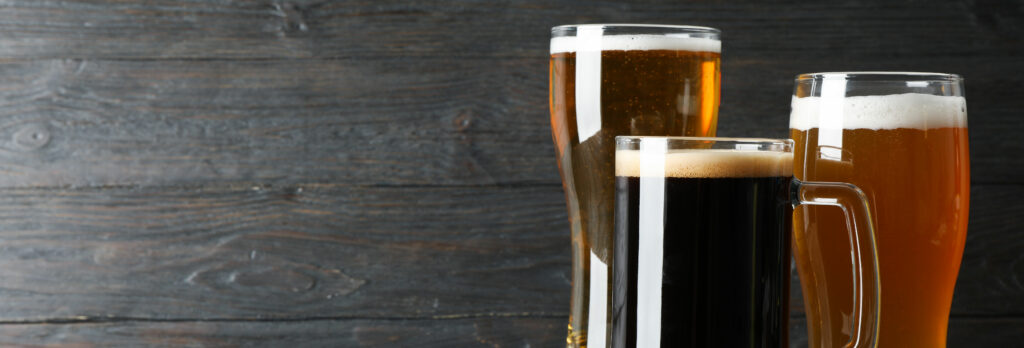
Designing Belgian beer recipes starts with a little knowledge of the beer style you’re wanting to create. Belgian beers are famous for the malt and yeast character and incredible balance
What Belgian Beer Styles?
Singel, Dubbel, Tripel, Quadruple – commonly differentiated by their strength. The Singel is commonly brewed within the walls of a monastery and enjoyed by the brothers who brew the beer. The Dubbel style is translated simply to “Double” and generally thought to be higher in strength than the Singel and in turn, Tripel is higher in alcohol than Dubbel and the Quadruple is a Dubbel with all the quantities increased to really drive the raisin, fig & caramel flavours of the malt, its a dark and complex style.
Belgian Pale ales are about balance, an example malt grist would be; Belgian Pilsen (85%) and some Munich (10%) & Biscuit Malt (5%), with low hop bitterness and fruity esters from the yeast.
Farmhouse ales such as Saison & Biere de Garde were brewed and enjoyed with the ebb and flow of the seasons. Saison means “season” and was enjoyed by the farm workers during the summer months, it was a pale refreshing and highly attenuated for a dry finish, medium/high fruity & spicy flavours and low malt character with a little sourness. Biere de Garde translates to “beer for keeping” so again farmers utilise the downtime in the cooler months to make beers for quenching that thirst in the warmer summer months.
There is of course Witbiers, Lambics and Gueze. Witbier is a super refreshing, elegant and very enjoyable beer style, the bready notes of the malt balance the citrusy dry tart finish. Lambics & Gueze is a topic for another day as it takes years to brew, it starts with spontaneous fermentation and lots of patience for the ageing process.
Flanders is another Belgian style that has a tart flavour profile like lambics, they are available in two varieties. Flanders Red & Brown (Old Bruin), the Oud bruin character comes from dark malts, long boiling and moderate lactobacillus infection. Flanders Red is a delicate complex wine-like beer and again needs a long ageing process similar to lambics.
The supreme Belgian beer style is Trappist, they are produced by the Cistercian monks and must be made within the walls of an Abbey and under the supervision of the monks and all profits go towards charitable causes. The monks dedicate their lives to work and prayer and they produce authentic Trappist beers some of which are the most famous beers in the world and held in high regard.
The journey of every brewer should see you experiment with brewing some Belgian style beers, striving to get that balance and explore the use of botanicals and spices and get used to doing multi-step mashes, Belgian beers enjoy a high level of carbonation and thick fluffy head so you get to understand how to bottle condition correctly. I’m a fan of natural carbonation, I strongly believe you enjoy a nicer mouthfeel in the beer.
Introducing you to Belgian Beer Recipes…
Check out the new range of all grain recipe kits we have created showcasing the finest Belgian ingredients from Dingemans :
https://www.geterbrewed.com/dingemans-beer-kits/
https://www.geterbrewed.ie/dingemans-beer-kits/
Checkout Our Video Talking throught the new range of Belgian Beer Kits here: